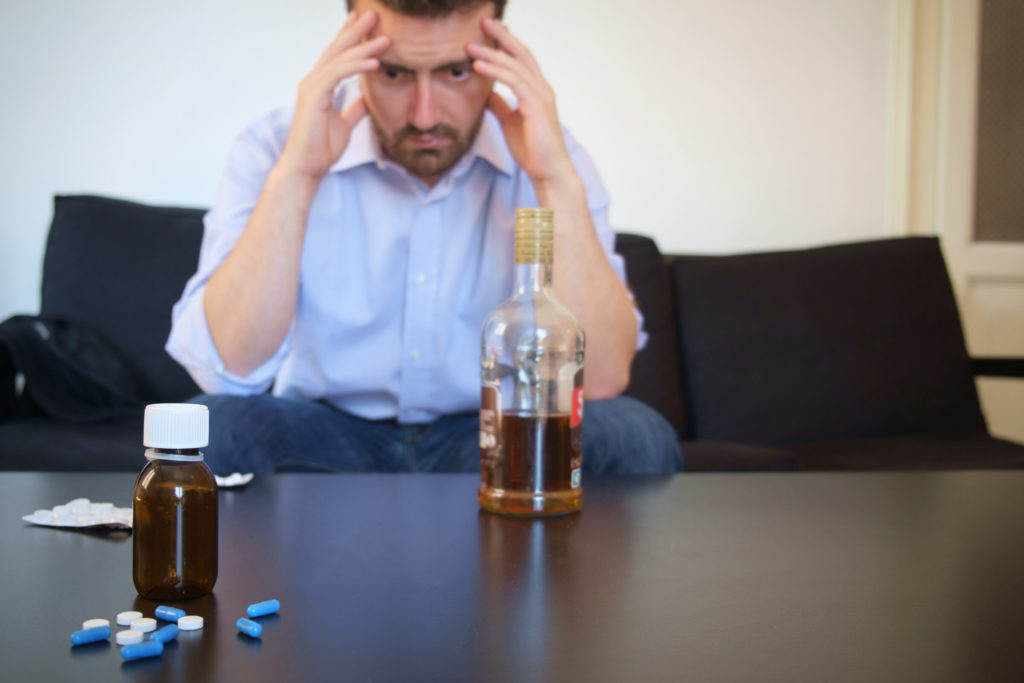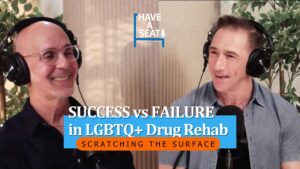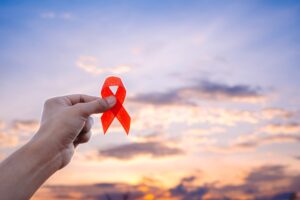Co-occurring mental health conditions and substance abuse affect nearly 8.9 million people yearly. Put another way, about half of the people who have a mental disorder will also have a substance use disorder at some point in their lives and vice versa.
And yet, over 55% of those with co-occurring disorder don’t receive any kind of treatment. Among those who do receive treatment, only 7.4% receive the correct kind.
Co-occurring disorders—sometimes referred to as dual diagnoses—are defined as any combination of mental illness (for example anxiety disorder, depression, or panic disorder) and addiction (to alcohol, drugs, or sex). It’s important to note that these are the most common combinations, but countless possibilities exist.
These conditions deserve special attention for a few reasons. First, because patients with co-occurring disorders have high suicide rates. For example, men with alcohol-use disorder and depression have the highest long-term suicide risk, at 16.2%.
In addition, patients with co-occurring disorders often exhibit violent tendencies. Indeed, one study found that 31% of people who had both a substance abuse disorder and a psychiatric disorder had committed at least one act of violence in a year, compared with 18% of people with a psychiatric disorder alone.
What’s more, the interactions of the two conditions can worsen both. Let’s say a person with anxiety uses drugs or alcohol to cope with their anxiety symptoms. They may feel less stressed initially, but over time the substance use could actually worsen the anxiety.
LGBTQ clients are disproportionally represented when it comes to those diagnosed with co-occurring conditions. There are many reasons behind this, but the daily stress and stigma they experience is a major contributing factor.
Read on to learn more about co-occurring disorders, including the symptoms, challenges, treatments, and the connection to LGBTQ people.
Some Terminology
Before diving into the subject of co-occurring disorders, it’s important to know a few terms first. Specifically, comorbidity, dual diagnosis, and co-occurring disorder.
While these terms are often used interchangeably, there are slight differences to be aware of.
- Comorbidity – This term describes someone who has both a mental illness and an addiction, but it also has a broader meaning.
This describes any circumstance when a person has two disorders or diseases. As an example, it could describe someone who has Parkinson’s disease and anxiety.
- Dual Diagnosis – A general term for two or more conditions that occur in the same person at the same time, whether physical or mental. For example, heart disease and diabetes is a dual diagnosis.
Dual diagnosis treatment is the most common term to describe the treatment plan for people with both a mental illness and an addiction.
- Co-Occurring Disorders – Co-occurring disorders describe a variety of diseases that commonly occur along with drug abuse or alcohol addiction.
This term is used almost exclusively for people who have a mental illness that contributes to or results from addiction. That being said, someone with addiction might have a co-occurring disorder like HIV, cancer, or hepatitis C.
What Causes Co-Occurring Disorders?
Although mental illness and addiction often occur together, this doesn’t indicate that one caused the other, even if one condition appeared first. In fact, it’s often hard to figure out which came first. Researchers give three possible explanations as to why they occur together:
- Many mental health disorders arise from the same risk factors as addictive disorders. These factors include genetics, brain chemistry, stress, and trauma.
- Mental disorders can contribute to drug use and substance use disorders. As an example, people with mental disorders may use drugs or alcohol to feel better temporarily. Mental disorders may also “change the brain’s wiring,” making it more likely to develop an addiction.
- Substance use and addiction can contribute to the development of a mental disorder. Namely, substance abuse “changes the brain’s chemistry,” making an individual more prone to developing a mental disorder.
Symptoms of Co-Occurring Disorders
Because the term co-occurring disorder comprises so many different combinations of mental illnesses and substances, it’s difficult to come up with a succinct list of symptoms. Symptoms will vary depending on which mental health condition and substance are present. However, some of the most common overlapping symptoms include:
- Euphoria
- Depression
- Social withdrawal
- Moodiness
Likewise, the consequences of both disorders are similar. Some of these include:
- Impaired social functioning
- Unstable relationships
- Financial difficulties
- Unemployment
- Poor physical health
- Increased risk of suicide

What Makes Dual-Diagnosis Treatment So Challenging?
Treating co-occurring disorders (often referred to as dual-diagnosis treatment) is often more challenging than treating individual mental health or substance abuse disorders alone.
That’s because it’s hard to know where certain symptoms are coming from. For example, if a client is suffering from depression, it’s difficult to know whether drug addiction or mental illness is causing the problem. Depression is a symptom of many things, so medical professionals must identify and treat the root cause.
Another challenge of dual diagnosis treatment is that it may take longer to complete than traditional mental illness or addiction treatment. Not only is there no “quick fix” for drug or alcohol rehab, but treating mental illnesses also requires additional care and patience. As a result, dual diagnosis treatment may be months or even years longer.
A final challenge of dual diagnosis treatment worth noting is that it requires a specialist. Many addiction treatment centers aren’t equipped to provide this kind of care. Only those facilities with a psychiatric staff and an emphasis on dual diagnosis are well-placed to help these individuals with their recovery. Finding such a program may prove difficult.
Treating Co-Occurring Disorders
The most important thing to keep in mind when it comes to dual diagnosis treatment is that both conditions must be addressed. Not surprisingly, the best dual diagnosis programs provide integrated treatment. Indeed, treating both the mental illness and the addiction “under the same roof” has proven to be a successful treatment method for dual diagnosis patients.
Treating co-occurring mental health disorders and addictions at the same time is important for several reasons:
- Integrated treatment programs are designed to overcome the negative symptoms of mental health disorders, such as a reduced attention span, a low level of motivation, and a fear of socializing with others.
- Medication therapy is more effective when the pharmacological plan addresses both the mental health disorder and the substance abuse disorder.
- Traditional hesitations about prescribing psychotherapeutic medications are no longer an issue.
- Group therapy offers a stronger support network for individuals who are struggling with both mental illness and addiction.
- Treating both conditions together helps clients address their unique relapse triggers, such as depression, mood swings or panic attacks.
In addition, good dual diagnosis programs move at a pace that’s comfortable for the individual. Because of the mental health component, providers must move the rehab along at a pace allowing the patient to feel safe and supported.
Beyond these considerations, various treatment programs and methods show promising results. When looking for a treatment program, look for the following key features:
- A staff of psychiatric professionals and addiction therapists with specialized training in treating co-occurring disorders
- A staff trained in integrative treatment for mental illness and addiction
- Close collaboration among treatment professionals
- Individual counseling, peer support groups, and aftercare recovery resources for psychiatric and addictive disorders
- Access to pharmacological therapy for depression, anxiety, or other mental health conditions
Why Are LGBTQ People More Likely To Have Co-Occurring Disorders?
One of the most common reasons that people use drugs and alcohol is to cope with stress. Lesbian, bisexual, transgender, and queer people (LGBTQ) are more subject to chronic stress than their heterosexual peers due to the harassment and discrimination they face on a regular basis.
While exact data is lacking, researchers do acknowledge that this chronic stress likely makes LGBTQ people more vulnerable to both mental health disorders (notably anxiety, depression, and suicidal ideation). In fact, 39% of LGBTQ people report suffering from a mental disorder in the past year, compared with 26% of the general population.
In terms of alcohol and drug abuse, an estimated 20 to 30% of the LGBTQ community abuses substances, compared to about 9 percent of the general population.
Transgender individuals are especially vulnerable to addiction to deal with feelings of anxiety or loneliness. One study found that transgender students are 2.5 times more likely to use cocaine or meth. They’re also twice as likely to abuse prescription medications (such as prescription opioids or benzodiazepines).
Stress
LGBTQ people are more likely to experience stress than their heterosexual counterparts due to the circumstances they’re confronted with on a regular basis. Some of these include:
- The decision of whether to come out, and if so, how
- Rejection or punishment from family members
- Societal prejudices about LGBTQ people
- Bullying and harassment growing up
- Fears of discrimination in social and work situations
- Fears of physical violence
- Feeling alone and different
- Shame or negative self-view
These stressors may lead LGBTQ individuals to use drugs or alcohol as a means of escape. In many cases, addiction develops as a result of repeated attempts at self-medication for emotional or psychological pain.
Party Culture
While stress is a big contributor to the high rates of mental disorders and substance abuse in the LGBTQ community, it’s not the only factor. Substance use has a strong social component, giving people a reason to meet in bars or clubs. In addition, subcultures within the LGBTQ community, such as party and play, celebrate and encourage substance use and abuse.
Treatment Challenges For LGBTQ People
Based on these risk factors, it goes without saying that LGBTQ people need access to mental health and substance abuse treatment. While most treatment centers recognize how important this need is, not all are equipped to help LGBTQ people.
In fact, a study of LGBTQ-specific treatment programs found that about 12% of treatment facilities reported LGBTQ-specific services. Upon follow-up, the study’s authors determined that only 7.4% of them could identify a specific service tailored to LGBTQ clients— the rest merely noted that they accepted or did not discriminate against LGBTQ clients.
These statistics are problematic because they indicate that LGBTQ individuals aren’t receiving culturally-competent care, something that’s proven to have a negative impact on treatment outcomes if absent.
In terms of LGBTQ clients, this may look like:
- Having to come out repeatedly during treatment.
- Hiding their sexual orientation or gender identity from their therapist.
- For transgender, gender-queer, or other non-binary individuals, being required to use facilities designated for their biological sex.
- Experiencing verbal or physical abuse from other clients or even staff.
Why Affirmative Treatment Is Crucial For LGBTQ People With Co-Occurring Disorders
At La Fuente Hollywood Treatment Center, we believe addiction treatment for LGBTQ people should address the unique needs of this population. Rather than treating them as outsiders, LGBTQ-affirmative programs put these individuals at the center of substance abuse treatment.
These kinds of services really do make a difference in treatment outcomes. For example, a study found that people who received LGBTQ-specific services had much higher rates of abstinence from substance use after completing treatment.
Broadly speaking, LGBTQ-affirmative treatment is better equipped to help LGBTQ people overcome the issues behind their addictions and mental health challenges. More specifically, LGBTQ people don’t have to think about receiving culturally competent care when they come to La Fuente Hollywood Treatment Center.
For example, we already know that all of our patients are part of the LGBTQ community—there’s no need to come out over and over. In addition, members of our staff are themselves part of the LGBTQ community, so they understand LGBTQ co-occurring disorders from both a personal and professional standpoint. In addition, we’re committed to honoring every single client’s sexual orientation and gender identity and will make arrangements whenever necessary.
If you or a loved one is suffering from substance abuse and a mental health disorder, please fill out the form below. Once we receive your response, a member of our treatment team will reach out to help answer your questions and determine if our Los Angeles addiction treatment center is right for you.





